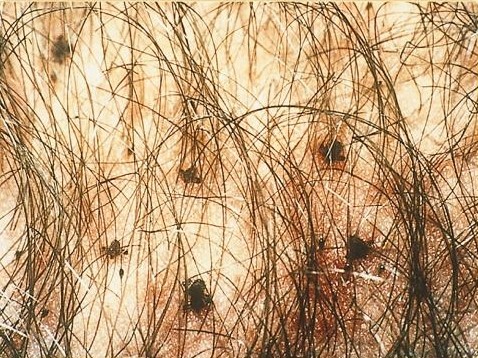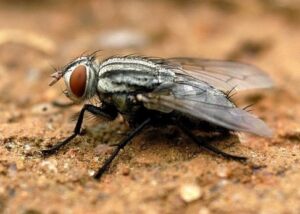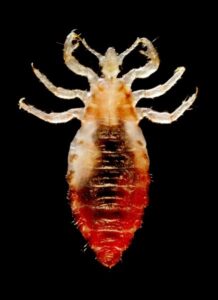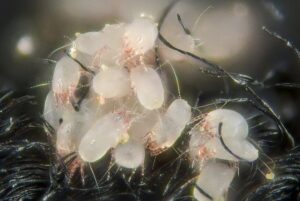Pubic or Crab Louse:
Identification

- Adults are 1.5–2.0 mm in length and flattened. They are smaller than body lice and headlice,
- The body is broad and short, and the front legs are much smaller than the second and third pairs.
- The first apparent abdominal segment bears a total of six spiracles on its upper surface.
- Eggs (also called nits) are 0.8 mm by 0.3 mm, oval and usually yellow to white.
Life Cycle and Common Characteristics
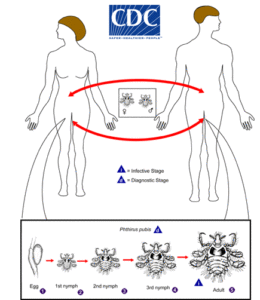
- It has three stages: egg, nymph, and adult.
- Eggs are laid on a hair shaft.
- Females will lay about 30 eggs during their 3–4 week life span.
- Eggs hatch after about a week and become nymphs, which look like smaller versions of the adults.
- The nymphs undergo three molts before becoming adults.
- Adults are found only on the human host and require human blood to survive.
- If adults are forced off the host, they will die within 24–48 hours without a blood feeding.
- The lice are transmitted from person to person most-commonly via sexual contact.
Damage and Medical Implications
- Lice are not known to transmit any disease.
- Signs and symptoms of this lice include itching in the genital area and visible eggs or crawling lice.
- Lice are spread through sexual contact and are most common in adults.
|
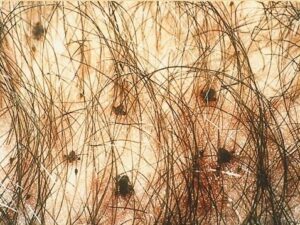
Credit: SOA-AIDS Amsterdam |
- Lice or their eggs are large enough to be seen with the naked eye.
- Dogs, cats, and other pets do not play a role in the transmission of human pubic lice.

